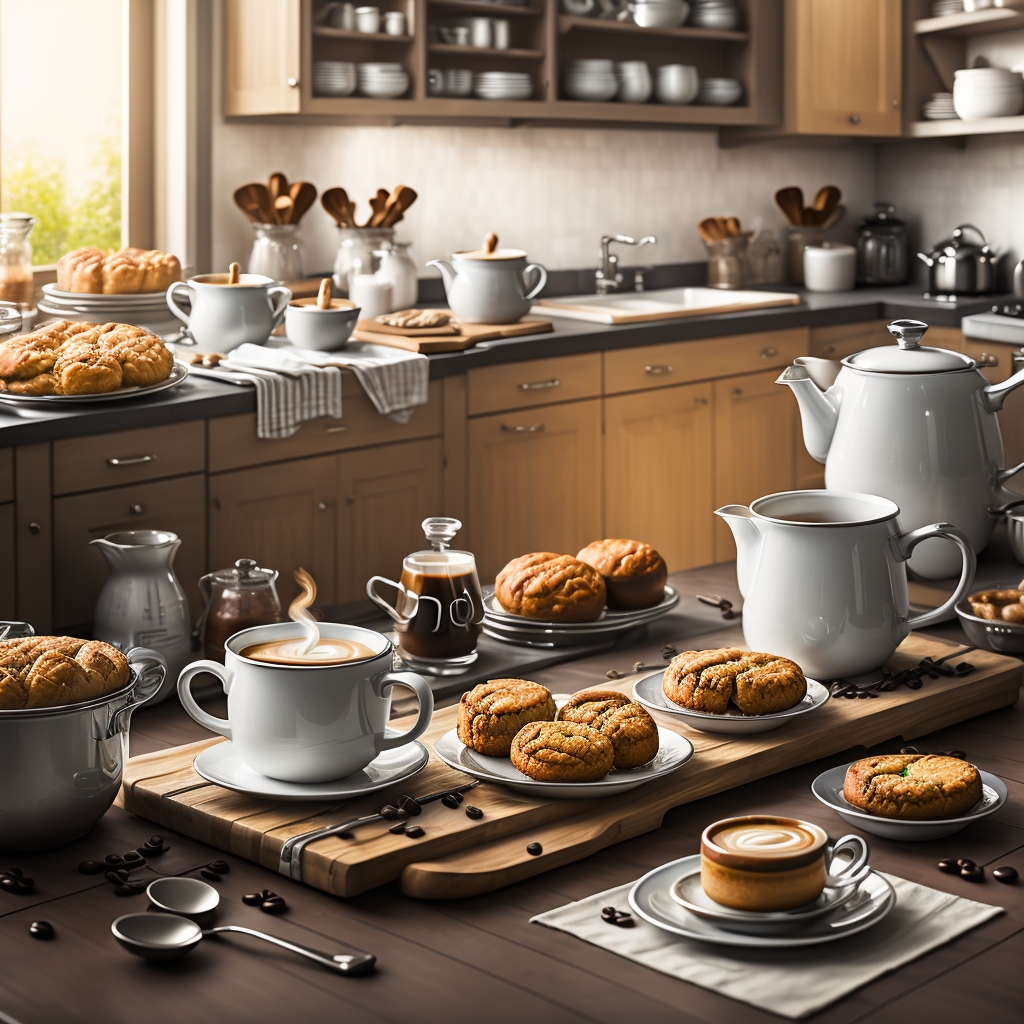The Puzzling Truth: Why Does Your Morning Coffee Smell Like Poop?
Welcome to an intriguing exploration of an odd, yet quite common phenomenon—the somewhat alarming similarity between the smell of your morning brew and, well, feces. What might strike you as a quirky jest or a gross exaggeration actually roots itself in the complex chemistry of a beloved beverage—coffee.
Chasing Aromas: The Science Behind the Smell
Have you ever taken a deep inhalation of your morning cup of Joe only to be met with a scent that closely resembles something far less appetizing? If so, you’re not alone. But why does this happen? The answer lies in the science of smell. Both coffee and feces contain various volatile compounds that trigger receptors in our noses. Some of these compounds, due to their intense activity, are shared by both.
A Stinky Reputation: Coffee’s Fecal Notes Explained
Coffee beans, depending upon their origin, roast, and brew method, can host around 800 to 1000 volatile aroma compounds. Interestingly, one of them happens to be skatole—a compound that’s also known to be present in feces, contributing to its characteristic smell. Your olfactory receptors pick up on scents by recognizing these compounds, hence the likeness in aroma.
| Common Aroma Compounds | Coffee | Feces |
|---|---|---|
| Skatole | ✅ | ✅ |
| Furaneol | ✅ | ❌ |
| Guaiacol | ✅ | ❌ |
However, worry not! The presence of skatole in your coffee is relatively miniscule compared to other aroma compounds, and it usually blends with other flavors and smells. It’s all a part of coffee’s unique, multi-faceted aroma profile that gives you a robust, rich and varied sensory experience.

The Fecal Notes: Unraveling the Bitter-Scented Mystery in Your Coffee Cup
Now that we’ve glimpsed the scientific underpinnings of this aroma similarity, let’s delve deeper into the labyrinth of coffee’s flavonoids. Understanding how these aromas come to life during the brewing process can shatter the unsettling association between coffee and feces, leaving us with a renewed appreciation for the beverage.
Roasting, Grinding, and Brewing: Aroma Awakening
The presence of aromatic compounds in our coffee begins with the roasting process. Roasting transforms the humble green beans into the brown, aromatic marvels that we know and love. The heat applied during roasting triggers a series of chemical reactions known as the Maillard reactions, which impart a whole array of flavors and smells – including the divisive skatole.
Grinding further amplifies the release of these aroma compounds. The act of crushing opens up hidden vaults of intense flavors and smells. Brewing, the final step, extracts these volatile compounds and transfers them into your cup, brewing a hot, aromatic concoction ready to tantalize your taste buds.
The Fine Line between Luxury and Latrine
Skatole, despite its sketchy reputation, is a critical character in this aroma ensemble. At lower doses, it conveys an earthy and musky aroma—think moist soil after rain or the fresh, green smell of beets. It’s only at higher concentrations that our noses register it as foul and fecal. Even the perfume industry leverages skatole in minimal amounts to impart an earthy aspect to their fragrances!
In conclusion, the aroma of your coffee is a tightly woven tapestry of various volatile compounds—including a few odd ones like skatole—in delicate balance. Misinterpretations often occur when our brains, in default mode, draw connections between widely disparate, yet olfactorily congruent entities. But rest assured, your coffee is just being its complex, fragrant self, holding no real allegiance to the bathroom.

Brewing Troubles: How Coffee Might Influence Your Breath to Smell Like Feces
Perusing the intriguing relationship between the scent of coffee and the bathroom, one might stumble upon a somber query – does the consumption of the aromatic beverage affect our breath’s scent profile too? Let’s uncover the truth behind this uncanny connection.
The Influence of Coffee Consumption on Halitosis
Unpleasant coffee breath is a reality most avid coffee drinkers are well acquainted with. Despite the enticing aroma of freshly brewed coffee, the delightful beverage can potentially leave your breath smelling less than fresh. This, however, is not due to the fecal-associated aromatic compounds but a low pH level and drying effect coffee has on our oral cavities.
Drinking coffee can lower your mouth’s pH level, creating an acidic environment that’s a breeding ground for bacteria responsible for bad breath. Furthermore, coffee is a well-known diuretic—causing an increased frequency of urination, which can lead to dehydration and dry mouth. A dry mouth, void of saliva, helps these bacteria thrive, leading to a less-than-fresh scent of breath.
Nipping the Executioner of Fresh Breath in the Bud
While giving up coffee may seem like a drastic measure, there are simpler solutions to tackle coffee-induced halitosis. Staying hydrated, especially after coffee sessions, can alleviate coffee’s drying effects, maintaining salivary equilibrium in the oral cavity. Additionally, avoiding smoking post coffee indulgence and implementing good oral hygiene practices—such as brushing your teeth and tongue after coffee consumption—can drastically improve your breath’s freshness.
Although your favorite morning energizer may put your fresh breath at risk, a little extra attention to hydration and oral hygiene can neutralize these ill effects, protecting your reputation and your morning routine.

Rise & Shine: How to Nix the Poop Aroma in Your Daily Coffee Routine
Well, now that we’ve navigated the murky waters of coffee-induced halitosis, let’s turn to another pressing question – how do we eliminate the unwanted poop aroma from our beloved caffeinated libation? Don’t fret! From brewing techniques to ingredient tweaks, our coffee encounter can still be a delightful experience.
Mastering the Brew – A Critical Step
Firstly, the trek to a pleasant-smelling cup of Joe begins at the brewing phase. Ensuring that your water temperature during brewing stays between 195°F – 205°F is key. A temperature too high can extract more of the foul-smelling aromatic compounds, and too low can result in inadequate flavor extraction, leaving your coffee feeble and wholly unexciting.
The Innovation of Beans – Experiment with Variety
Before ruling out all coffee due to its sometimes off-putting aroma, experimenting with different coffee bean varieties might just be what you need. Arabica beans, despite being pricier, have a sweeter, soft taste with notes of sugar, fruit, and berries and a less prominent “fecal note” compared to the Robusta variety.
Lift Your Coffee to New Aromatic Heights – Embrace a Pinch of Salt
Have you ever thought about adding a dash of salt to your coffee? Although it may sound bizarre, a little pinch of salt can work wonders and provide the balance your coffee desperately needs. Salt can counteract bitterness and round out the harsh edges of your cup, potentially suppressing off-putting aroma. Alton Brown, a food network personage, swears by this trick!
Unlocking the mysteries of coffee’s unusual aroma has been quite a journey, but with a few adjustments, you are now fully equipped to elevate your coffee experience to a realm beyond unsightly comparisons. Let’s say no more ‘poop coffee’, hello aromatic elixir!

A Cup of Balance: Determining the Right Amount of Cream and Sugar for a Stellar Coffee
Having expelled the specter of dissatisfying aromas from our cherished beverage, the time has come to talk about achieving harmony in your coffee cup. It’s not just the beans and brew that make a difference, it’s how you choose to round out the flavor with cream and sugar.
The Creamy Factor: Balancing Coffee’s Acidity and Bitterness
A thoughtful dollop of cream or milk can interact beautifully with coffee’s acidity, mellowing it and lending a creamy, decadent texture to the overall experience. It’s noteworthy though, that the nature of your dairy accompaniment can influence your coffee’s flavor profile – high-fat creams enrich flavors while skimmed or low-fat milk accents coffee’s inherent flavors, by offering less of a palate-topping creaminess.
The Subtle Art of Sugaring
Sugar is a known counterpuncher to coffee’s innate bitterness. But swing too much, and you’ll end up sipping a sweet dessert instead of a perfectly balanced cup of java. A little goes a long way! Intriguingly, one or two teaspoons of sugar can enhance not just the sweetness, but also the perceived body of the coffee, making it feel fuller and richer.
The Measure of All Things: Coffee, Cream, and Sugar
What’s right, you ask? A classic cup according to most coffee connoisseurs would be 6 ounces of coffee, 2 teaspoons of cream, and 1 teaspoon of sugar. But remember, coffee, like any culinary quest, is intensely personal. Experiment, tune into your taste buds and find the balance that brings you pure coffee joy.
With the equipped knowledge of cream and sugar balance, let’s delve into an unconventional addition which may be a game changer to your coffee drinking experience.

Baking Soda as a Magic Elixir: Remarkable Tips to Improve Your Coffee Aroma and Flavor
With our tastebuds now enlightened on the fine-tuned balance of cream and sugar in a cup of coffee, this surely would be the time to shake up the routine and add a new element to our brewing equation — enter the unassuming baking soda. Yes, you read it right!
Baking Soda in Coffee: Unraveling the Science
Baking soda, or sodium bicarbonate, is alkaline in nature and possesses the ability to neutralize acidity – quite a handy trait especially when dealing with particularly sour or acidic coffee beans. A pinch of baking soda in your coffee could potentially smooth out its flavor and mellow down any harshness or bitterness.
The Perfect Dosage: Knowing Is Half the Battle
As intriguing as it sounds, caution is needed. Too much sodium bicarbonate can render your coffee flat or even imparts it a salty taste. According to many seasoned coffee tasters, a quarter teaspoon of baking soda for a pot of coffee (approximately 4 to 6 cups) is sufficient to enhance its flavor without shifting the base profile dramatically.
| Coffee made for | Baking Soda |
|---|---|
| 1 cup | A pinch (<0.0625 tsp) |
| 4-6 cups | 1/4 tsp |
| 12 cups | 1/2 tsp |
Pros and Cons: A Cup to Reflect Upon
While the surprising benefits of adding baking soda include an enhanced body, reduced acidity and even potentially health benefits due to lowered acidity, it’s pertinent to acknowledge some reported cons – the foremost being a possible shift from coffee’s naturally delightful taste if overdone. It’s all about cautious moderation, as with any ingredient.
And so, as we savor our last sip of this enlightening coffee journey, a fragrant cup of joe in hand, let us remember – start with quality beans, balance with precision, experiment with daring, and savor with mindfulness. The aroma of a perfect coffee isn’t that distant, and every step of the way is but another inviting scent to follow.
